Back in 2015, Dadi Einarsson explained the visual effects work on Everest. He then worked on several projects such as Trapped, Adrift and Hunters.
Gavin Round began his career in visual effects over 20 years ago at Framestore. He has worked on a number of projects including Edge of Tomorrow, King Arthur: Legend of the Sword, Wonder Woman and Adrift.
What is your background?
Gavin Round // After graduating from a fine art degree in East London I began my career as a Runner at Framestore back in 2001. I soon began working in the editorial department as a VFX Editor for a number of years. I then moved over into their Digital Lab as a DI Producer before leaving in 2009 to go freelance and move back into VFX and was fortunate to work with many amazing Producers and Supervisors as a Coordinator and Production Manager before taking on my first VFX Producer role in 2017.
How did you get involved on this series?
Dadi Einarsson // Gavin and I had worked together on a film called Adrift a couple of years earlier. He suggested me for VFX supervision for additional photography in Budapest on season 1 which lead to me being involved in some sequences in post. Following that I was asked whether I would be interested in supervising season 2. The stars aligned and I was very happy to join the project.
Gavin Round // I’d worked with Polish VFX facility Platige Image on Wonder Woman and we’d kept in touch. I was a big fan of The Witcher video game and when I met with Jarek Sawko who was Producing The Witcher for Netflix I was immediately interested. Fortunately the timings all worked out and Netflix hired me back in June 2018 for season 1.
What was your feeling to work on such an iconic universe?
Dadi Einarsson // I was super excited. It’s such a rich world to immerse oneself in and an incredible opportunity to express ideas that spring to mind when reading. It really is a mix of everything one could hope to do as a visual effects person: characters, creatures, environments, magic FX, blood and gore… just a sandbox of all the fun stuff. The fact that there was such a big fanbase form the books, the game and then season 1 of the show was very inspiring and says everything about the appeal of the world Andrzej Sapkowski’s has created.
Gavin Round // As I say, I was a huge fan of the video game – firstly from the trailers and cinematics that were directed by Tomek Baginski, one of the show’s producers. I was so impressed with the cinematics that I actually tracked down and hired Tomeks stunt team for a previous project a few years back. Anyway from there I learnt of the books but didn’t quite realise at that time how massively popular those are and having such a rich world full of nuanced and complex characters made it so easy to become immersed and I’ve been pretty immersed ever since!
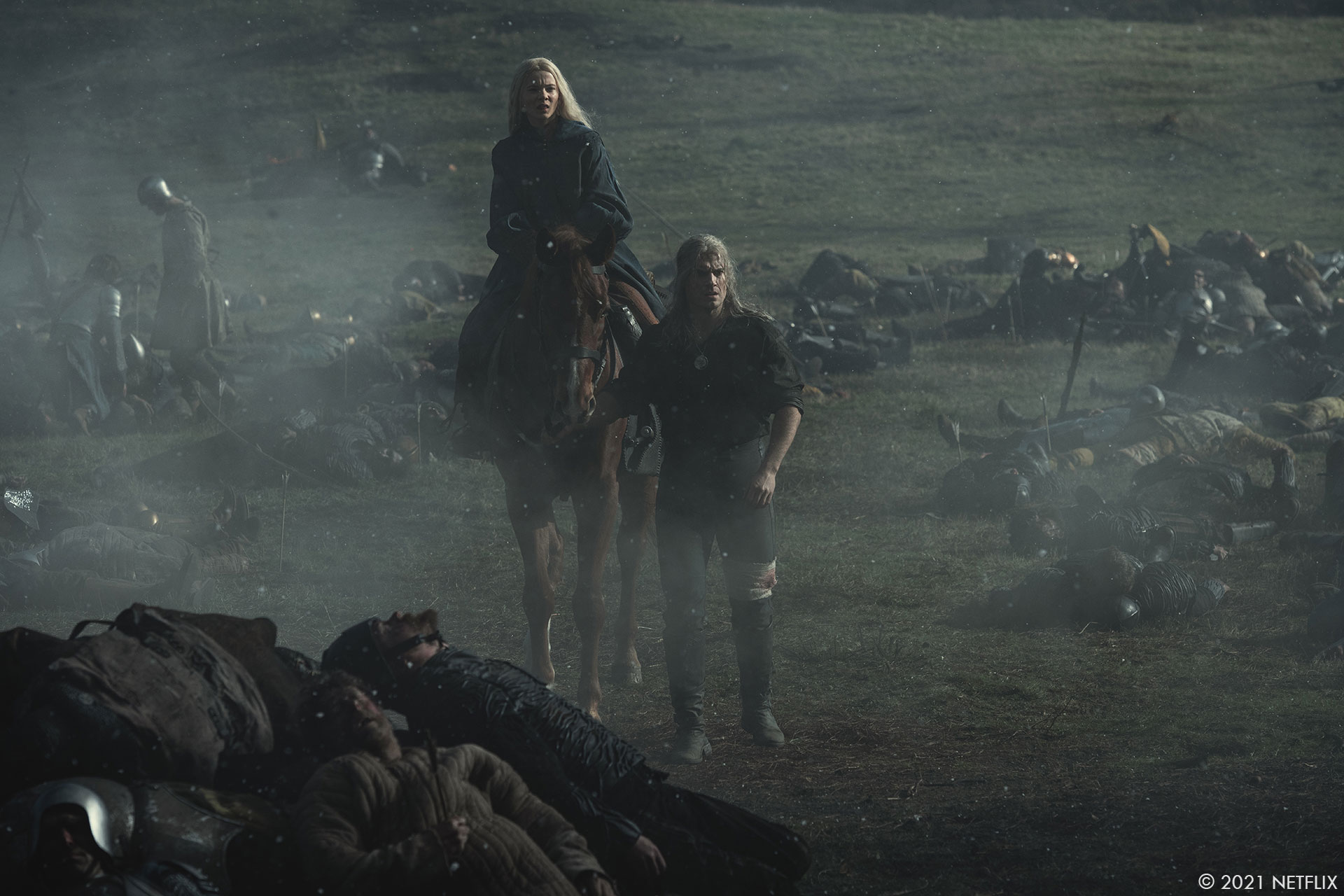
How was the collaboration with the showrunners and directors?
Dadi Einarsson // Our showrunner Lauren Schmidt Hissrich was incredible to work with. Every idea we had was met with an open mind and a “show me” spirit. Some things landed while others were questioned or thrown out which lead to a really creative experience. Back to the drawing board if it didn’t feel right. We would meet with Lauren, the directors, producers, production designers and assistant directors to read through scripts and schedules and thrash out ideas and methodologies. Overall a super collaborative and enjoyable experience.
Gavin Round // I can’t really understate how much I enjoyed working with our showrunner Lauren Schmidt Hissrich. Lauren is hugely creative and collaborative it was such a great experience working with her and the Directors and Producers and witnessing how she managed to so effectively promote a culture across the production of us all honouring a shared vision. She nurtured great dedication and passion in us all.
What was their approaches and expectations about the visual effects?
Dadi Einarsson // Gavin has a brilliant way of planning, breaking down and organising visual effects. His methods make all of that seem so easy and intuitive which creates a space for creativity and imagination. He is also a very creative artist himself. Our goal together was to make the most of the money we had to build a rich and deep world with believable creatures and cities that would give season 2 a feeling of epic scope.
Gavin Round // Ultimately I think Lauren, and in turn the Directors, trusted Dadi and I to bring our experience and vision to the table. We were given the opportunity to come up with and pitch ideas for our sequences with some being more successfully received than others! Yet overall we were afforded a fair bit of creative freedom and I think this is in part due to Laurens ability to successfully impart her vision.
How did you organize the work between you?
Dadi Einarsson // Essentially Gavin is responsible for managing the VFX budget and schedules and I am responsible for the technical approach and visual result of the work, but that doesn’t really do us justice. In reality there is a venn diagram where he is one circle, I am the other and there is a big overlap in the middle where the circles intersect. We are both involved in the ideas, the budgeting, the planning and execution of the work to a greater or lesser extent.
Gavin Round // I’d worked with Dadi before on a film a few years back and since then we have become good friends and have developed a great working partnership which I really value. I think it helps that we often agree on what we feel looks cool and are often bouncing ideas off of each other or sharing influences or reference that we often find we are both passionate about. I think this relationship has led to a blurring of the more typical supervisor and producer roles, with there being lots of cross overs, but I think our projects really benefit from this.
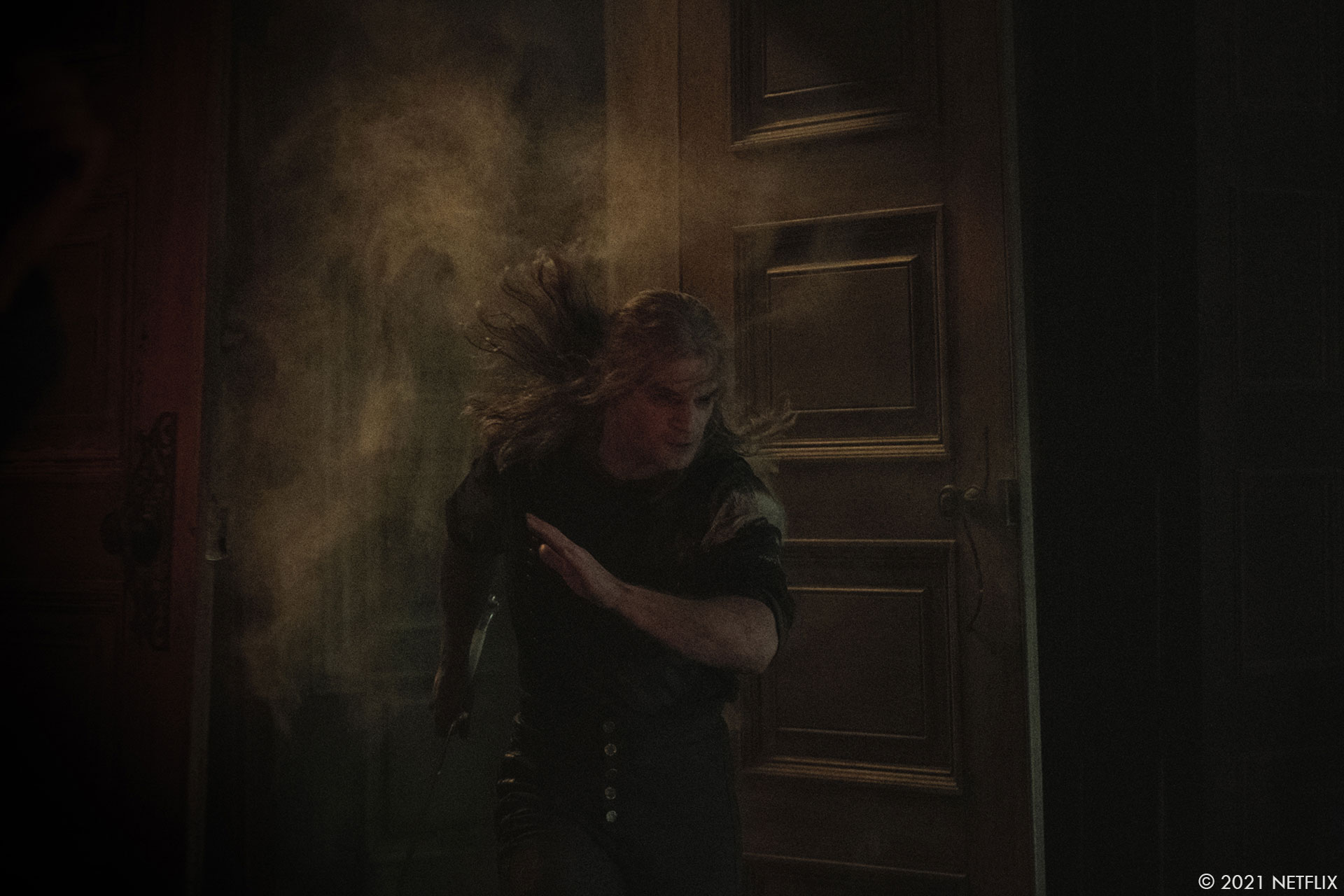
How did you choose the various vendors?
Dadi Einarsson // Some were involved in season 1 and did well on certain types of work. Others were new to the show but offered a specific skillset we had in mind for a certain character or environment. Budget and availability of key crew plays into it, previous relationships and experiences play a big part.
Gavin Round // I think Dadi has pretty much covered this one, however I would say that there is so much love for The Witcher that everyone was very eager and excited to be involved.
Can you tell us how you split the work amongst the vendors?
Dadi Einarsson // We were super keen to get Industrial Light and Magic on board for Nivellen. This was key to our approach and needed a top team with a proven record of creating a believable and special facial capture performance. ILM also did the Dark Elves Sphere, home of the Wild Hunt. An other worldly environment based on a hellish lava field in Iceland. They were amazing and we couldn’t be happier with the work they did.
Cinesite took on a split of environments and creatures. We knew their team well and have worked together many times. We decided to give them the mages’ castle of Aretuza, the Chernobog; a demon creature made of obsidian-eque stones called stellacite, and the hero boss fight monsters: the Basilisks.
RVX were given the Witchers’ home of Kaer Morhen. They had a track record of creating huge photoreal environments with a snowy, rocky feel. A perfect fit for the task.
Rodeo FX had some really nice creature work on their reel so we decided to give them the Eskel Leshy, the Queen Leshy and the Myriapod, very organic and gnarly creatures, the latter two coming into contact with one another.
One Of Us were involved with season 1 and were keen to do environments as well as a creature. We decided to give them Cintra and the Bruxa. The city of Cintra had been introduced in season 1 and we wanted to flesh it out and give it much more of a fully formed and realised presence. Establishing it from multiple angles with landmarks that the audience could become familiar with from the air but also from the ground when we extended locations and backlot sets. The Bruxa is a bat-like vampire creature who transforms from the white robed girl Vereena.
Platige Image came back for season 2 and we gave them Rience’s fire magic sequences, Fire Falka: an illusion created by Stregobor as well as Melitele Temple. They were our go to team for magic FX, portals and the Witcher’s signs.
Mr. X were given the towns of Oxenfurt and Gors Velen. These were a combination of aerial establishing shots with fully cg cities as well as set extensions from within our backlot builds.
NetFX took on a large number of shots that had simpler work which nevertheless needed to be done quickly and well, for instance lens fixes and complex wire removal.
Finally we had our in house team which comprised of The Post Office and Cheap Shots. They took care of as much compositing and paint work as they could handle.
Gavin Round // Again Dadi has covered this but I would add that a strategy we did employ was to leapfrog our lead vendors. Due to there being a lot of complicated sequences we were keen to spread out the work to avoid any bottlenecks during delivery so a lead vendor in ep one for example would play a more minor role in eps two and three but could return as a lead in ep four.
How was the collaboration with the VFX Supervisors?
Dadi Einarsson // They were great. Almost all of our interaction was via video conference calls as this show was made during lockdown with vendors working from home, which is an amazing feat in itself. Many of the supervisors were people we knew and had worked with before which is always good.
Gavin Round // Again Dadi has covered this but just to say we were so lucky to have the opportunity to work with some super talented artists and producers.
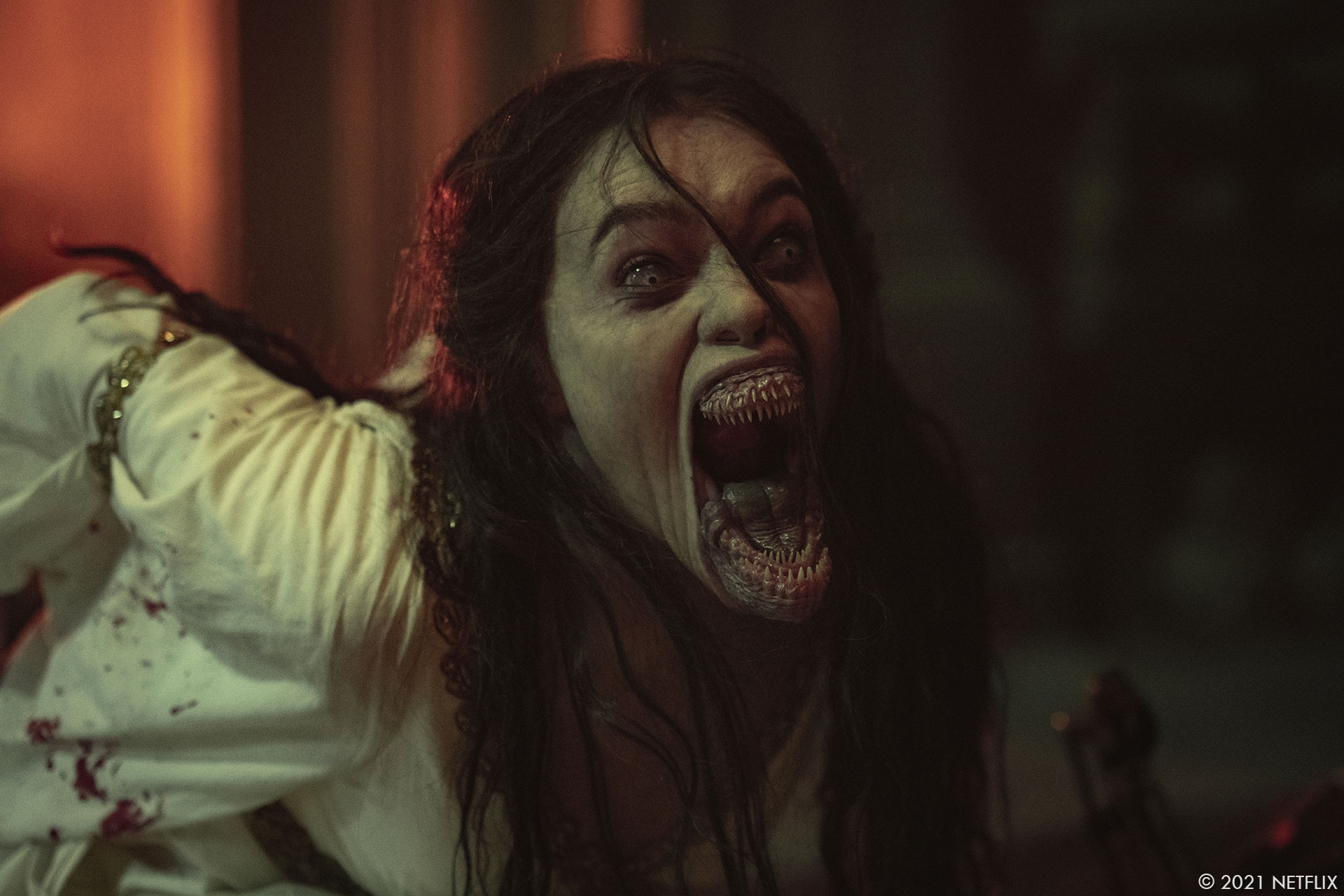
Gavin, you worked on the first season. What are the main changes with this new season?
Gavin Round // There is definitely an increase in the scope for the show. Dadi and I both really wanted to take what we’d established in season 1 and push it further; more creatures, bigger environments, more complicated fight sequences. Bigger, better, more! Thankfully the good people at Netflix also had the appetite.
This new season is more ambitious. Can you tell us more about that?
Dadi Einarsson // There was a definite desire both from us and Netflix to increase the scope of the show. That’s kind of a broad term but to me it means we wanted more depth to the characters and creatures by giving them feelings and a brain. Having layers rather than just being one dimensional. We wanted to bring the viewer into the world by really fleshing out the design of the cities and castles to give them a logic based in reality so we could establish them from anywhere and get a familiarity with each place. We wanted to create cinematic establishing shots which might feature a large tower somewhere, but then we’d cut to a walk and talk within the backlot where we would extend the set to show that same tower. That way the viewer starts to build an understanding of where the scene on the ground is happening relative to everywhere else which helps to nest them in the world of the story.
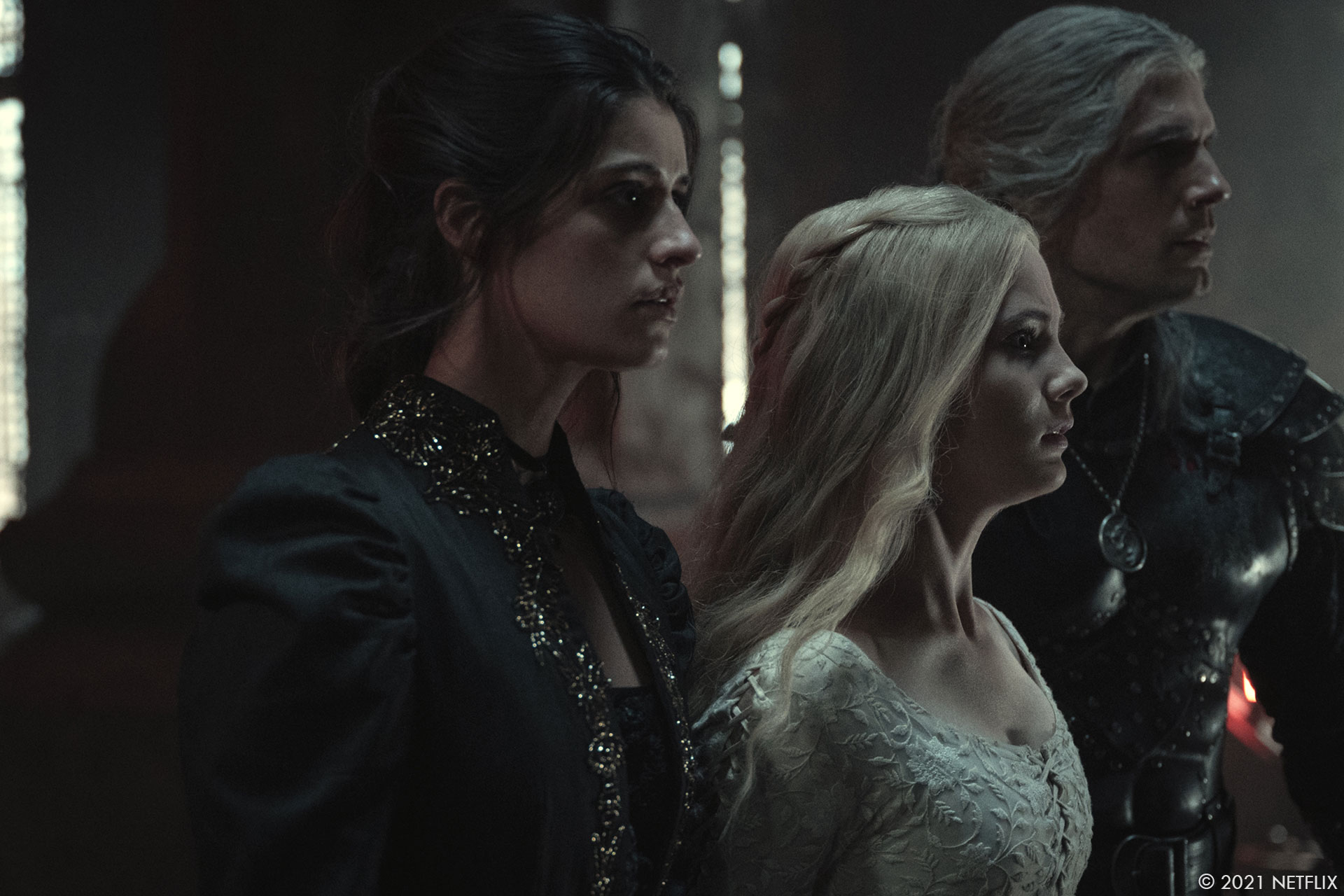
Can you elaborates about the design and the creation of the new creatures?
Dadi Einarsson // Production designer Andrew Laws and his concept artists gave us a starting point with all of the creatures. We would then take those and further develop with the vendors we chose to award them to. For instance with Nivellen, ILM modified the design to look more like Kristofer Hivyu. They did development work based on images of Kristofer with various facial expressions to really try to find the essence of his appearance. Once we had Kristofer on set we did a full scan of him and all of his facial expressions. His performance on set was then captured using a head mounted camera and transposed onto the fully CG Nivellen face.
Eskel’s Leshy was another really interesting one for us and Rodeo. The way the Witcher Eskel mutates and grows vines out of his body to become a 7 foot tall monster with multiple limbs called for some animation tests to figure out how to express the agony and insanity of the character as well as just how to make him move through the set.
The Basilisks went through a lot of design and development with Cinesite. Motion tests, relative sizes, proportions and colouring of the three different stages of mutated Basilisks and texture of the snake skin and feathers were needed to really nail what we wanted.
All of the creature sequences were previs’d with The Third Floor lead by the very lovely and talented Pete Panton who tragically passed away during production.
Gavin Round // Our production designer Andrew Laws passed concepts on to us as our starting point and we went from there. We were then able to take those creatures and begin to think about how they could move, how they could fight. As we built and developed the assets we often discovered certain attributes needed to be altered in order to have the creature move in a certain way. So it was important for us to be able to constantly revisit the design during the asset building process.
Can you tell us more about their rigging and animations?
Dadi Einarsson // Rodeo’s rig for Eskel was particularly complex, with procedurally generated vines and foliage. ILM’s Nivellen facial rig is incredible with the level of nuance and humanity that shines through. The Basilisk rig with large dinosaur-like musculature and feathered wings was pretty intricate also. In terms of the animation, we worked very closely with each of the animation leads. My background happens to be in animation so I have a very natural shorthand with animation teams and love working with them to bring these creatures to life.
Did you received specific indications for their animations?
Gavin Round // There are a couple of creatures for which the performance of our actors very much informed their look, movement and behaviour. For example we have a creature that transforms from a human and her creature animation was very much lead by the twitchy movements and affectations of the actor. In other cases the animation was informed by the original concept art itself or came about quite organically through the R&D phases.
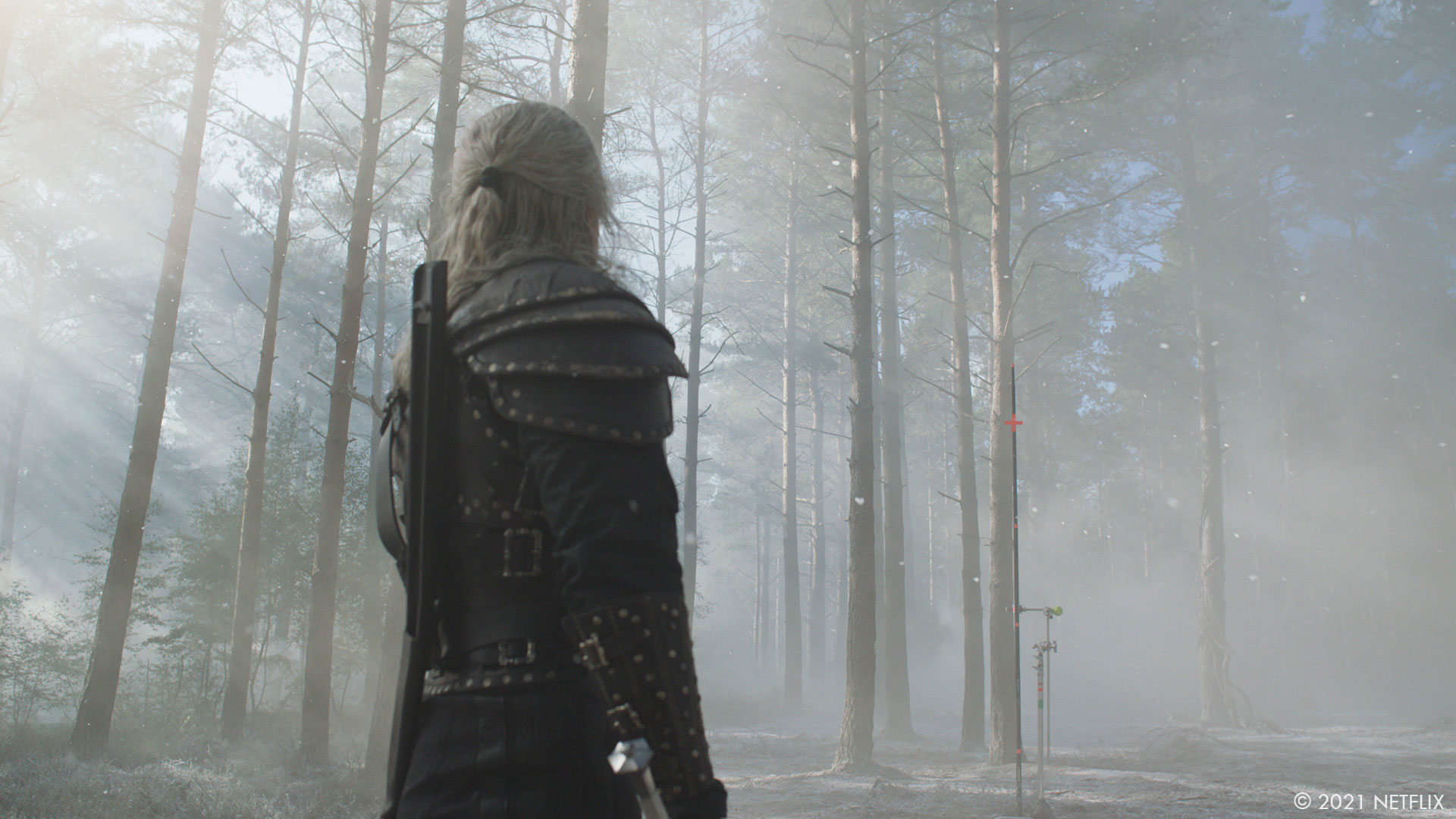
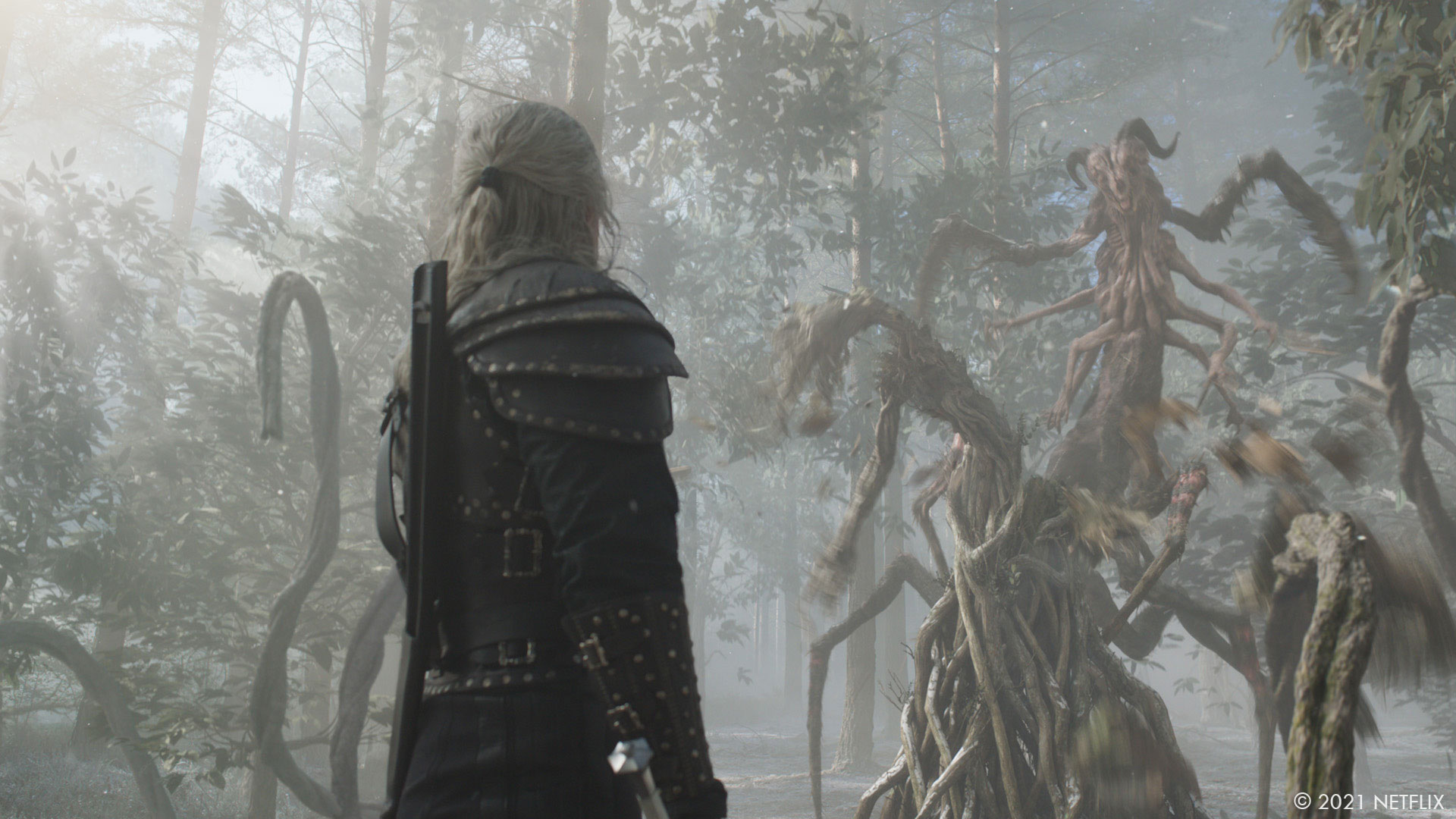
How was simulated their presence on set?
Dadi Einarsson // We had a really good tool from The Third Floor called Cyclops. This allowed us to import animated characters to an iPad and see them moving around as an AR overlay. A CG version of the set was built and we could calibrate the CG and actual sets to line up so that we could then see our animated characters in augmented reality.
For Eskel Leshy, Basil Eidenbenz who plays Eskel and a stunt performer would be dressed in a blue suit with a prosthetic face built by Barrie Gower. They would take turns performing moves worked out by combining our previs with the stunt team’s choreography lead by Adam Horton.
The Basilisks choreography was similarly nailed down by combining our previs with the stunt team’s choreography. Stunt performers were dressed in green suits holding polystyrene basilisk heads on sticks with a pool noodle for the tail at the other end. This was a really good approximation of the Basilisks for staging, fight simulation and action. Henry Cavill was fantastic at immersing himself in the Basilisk fight scene. We showed him the environment extensions in AR on Cyclops, talked to him about the behaviour of the Basilisks and showed him the previs. He then adapted his fighting beats to Geralt’s character and made them his own.
Gavin Round // We used a variety of methods from polystyrene heads painted green and mounted on poles for stunt performers to interact with to The Third Floor’s AR tool ‘Cyclops’ in which we could line up shots using an iPad with pre-loaded animated creature assets or environments tracked into our sets.
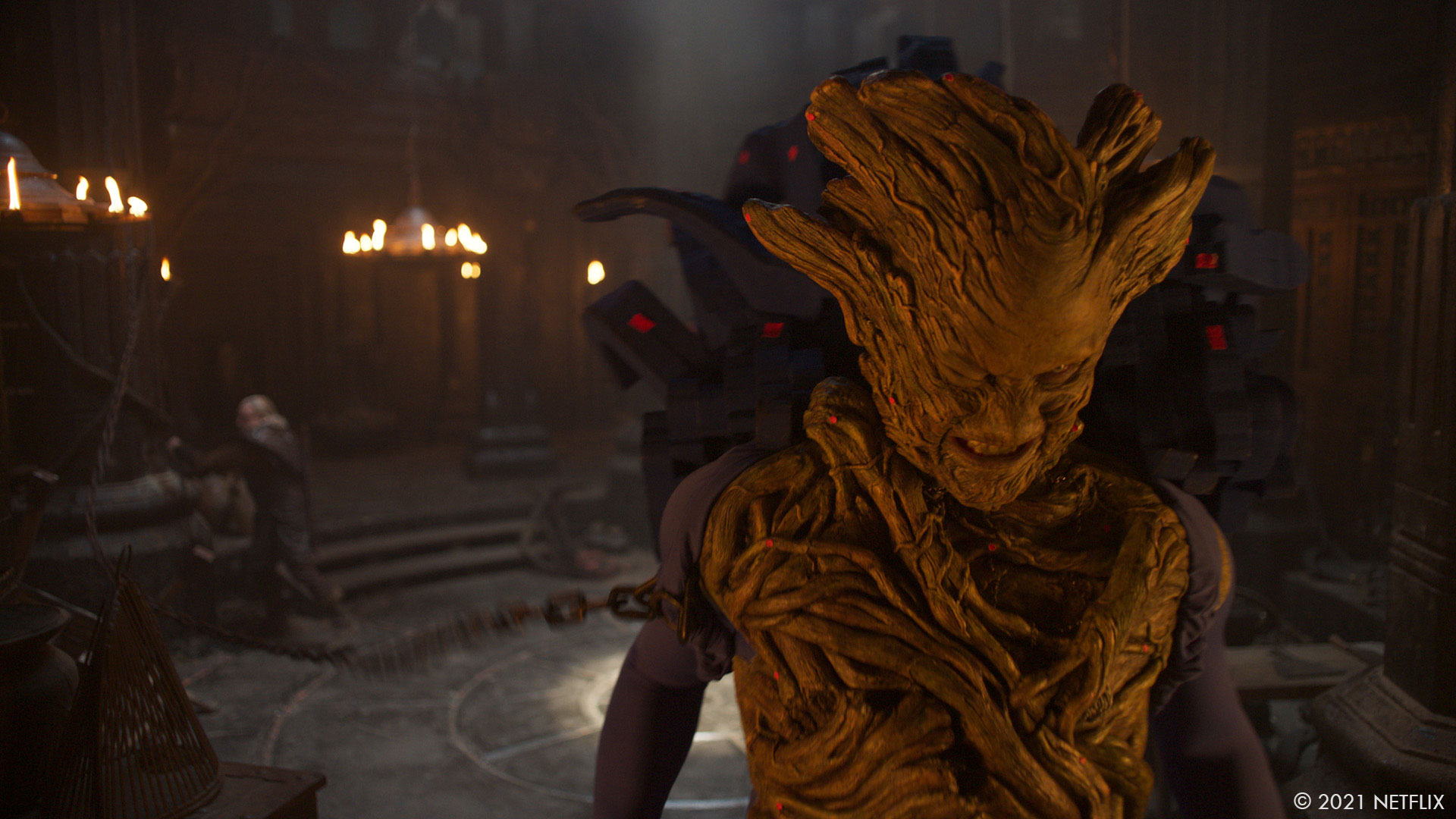
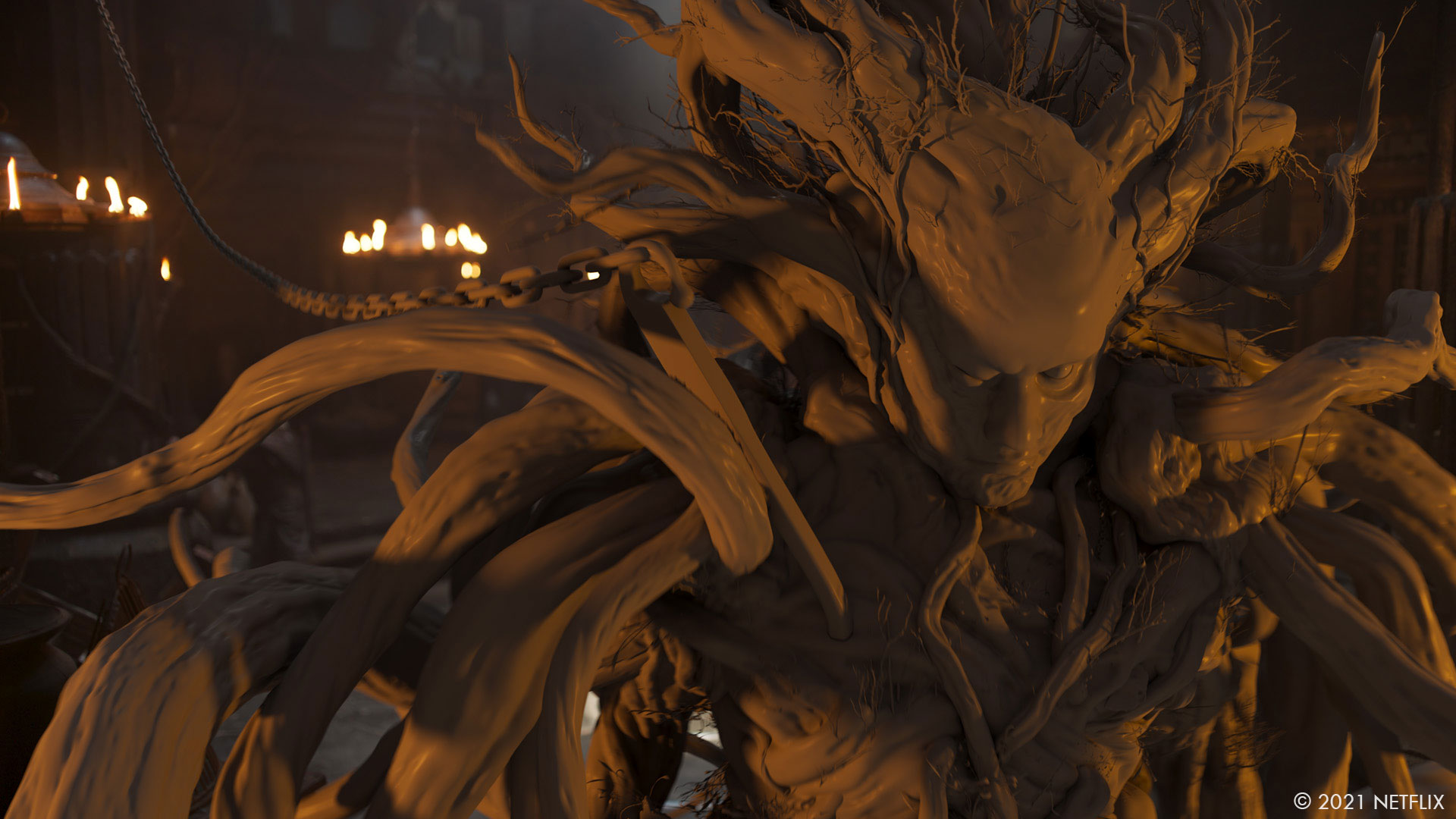
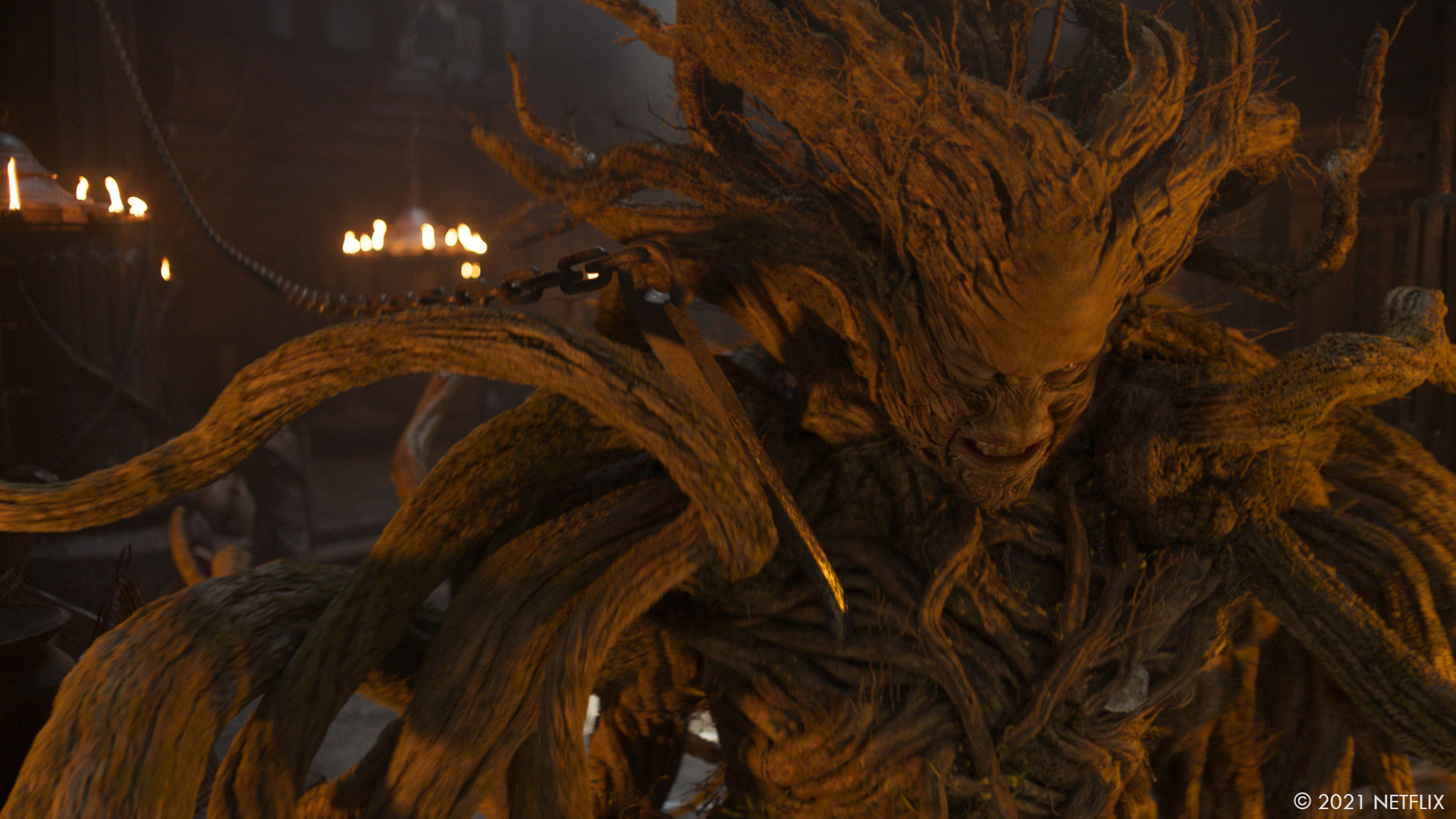
Which creature is your favorite?
Dadi Einarsson // That’s a bit like asking which of your children do you love the most. I really like the Leshy Queen who just has a really gothy, Tim Burton vibe. But it’s hard to look past Nivellen who is just a totally charming and fully rounded character. I loved working on him from Kristofer’s performance to ILM’s finals. A really great round trip that’s very dear to my heart.
Gavin Round // Really hard to choose. But I think everyone will love Nivellen. There’s some nasty creatures in the last episode too!
We discover many new environments and locations and especially Kaer Morhen. Can you elaborates about their design and creation?
Dadi Einarsson // Kaer Morhen was supposed to be shot largely on location in the Isle of Skye in Scotland but this was called off due to covid restrictions. Just before covid hit we were able to take a plates and scanning unit to Skye and capture the environment for photogrammetry and textures. Working in tandem with Andrew Laws’s production design, the team at RVX in Iceland created a fully CG environment and Kaer Morhen castle. This was then used for fully CG establishing shots, extensions of cast on location, on the backlot set of the Bailey (front courtyard of Kaer Morhen) as well as the higher level terrace entrance to the Great Hall. RVX also built all the CG extensions to the Obstacle Course which sits in the hills outside of Kaer Morhen castle. Because we built all of this as a single, fully fleshed out environment, all of the scenes that happen in and around Kaer Morhen can be visually connected to each other using landmarks and structures that relate correctly to each other, giving the viewer a solid feel for where they are.
Cintra was created by One Of Us as a fully designed city with urban planning of neighbourhoods and road systems, a large garden and a harbour. We shot helicopter plates in Ogmore in South Wales for the aerial establishing shots and views outside of Cintra with cast at Frensham Ponds which is south west of London. We also shot scenes in the gardens area of Cintra at Fountains Abbey in the north of England, the layout of which we incorporated into our Cintra layout and design. Finally we shot exterior scenes on our Arborfield Studios backlot which we extended using our CG environment, again making sure everything was correct in relation to the overall design of the city so the viewer always gains an understanding of where they are, the scale of the city and that nothing was left to guesswork or cheating. A super important aspect for me as it’s a vital grounding to create a believable world.
Gavin Round // The Kaer Morhen keep itself was designed by our Production Designer Andrew Laws and the surrounding environment was created as a fully CG environment by RVX in Iceland sourced from photogrammetry from Storr in Skye, stills photography and tiles. Knowing RVX had created Everest a few years back we knew we were in safe hands.
When was filmed the various parts of the season?
Dadi Einarsson // We shot from February to March 2020 when we shut down for covid. We started shooting again in August 2020 through March 2021.
Gavin Round // Due to Covid restrictions we were unable to travel overseas, barring some plates we were able to shoot in Iceland and the Canary Islands, so all the locations are from all over the UK. It was actually a great way to realise that we have some beautiful and often other-worldly locations here in the UK!
Which environments or locations was the most complicate to create and why?
Dadi Einarsson // Kaer Morhen was pretty complex because of covid restrictions and how much we needed to rely on RVX to fully create that environment. Some of the exterior locations we ended up being able to shoot needed to have the cast on horseback completely roto’d off and put in a fully CG environment.
Gavin Round // Kaer Morhen and the surrounding environment was probably the most complex. Again, owing to some travel restrictions we ended up having to recreate Storr in Skye as a fully CG environment sourced from photogrammetry and tiles shot in Iceland. Having the entire landscape as an entirely CG asset gave us the ability to have full control over the design of our shots.
What kind of references did you received for the environments and the creatures?
Dadi Einarsson // The environments were built from concept art from our production design team as well as reference from our VFX team and taken to detailed and fully functional designs from each of the vendors’ development teams. VFX studios have awesome talent that gathers reference and runs with ideas to really make these things look and feel real. The same goes for the creatures.
Did you want to reveal to us any other invisible effects?
Dadi Einarsson // There were hundreds of shots where Yennefer’s and Ciri’s eyes were coloured to be their character’s violet and green, wig lines fixed, swords extended for fight scenes, CG elven ears put on babies, CG fog and snow extended in forests, transitions from one set to another stitched together to make them feel like a single camera move. That kind of jazz.
Gavin Round // There was one or two invisible transitions that were often quite complex to shoot and stitch together in post.
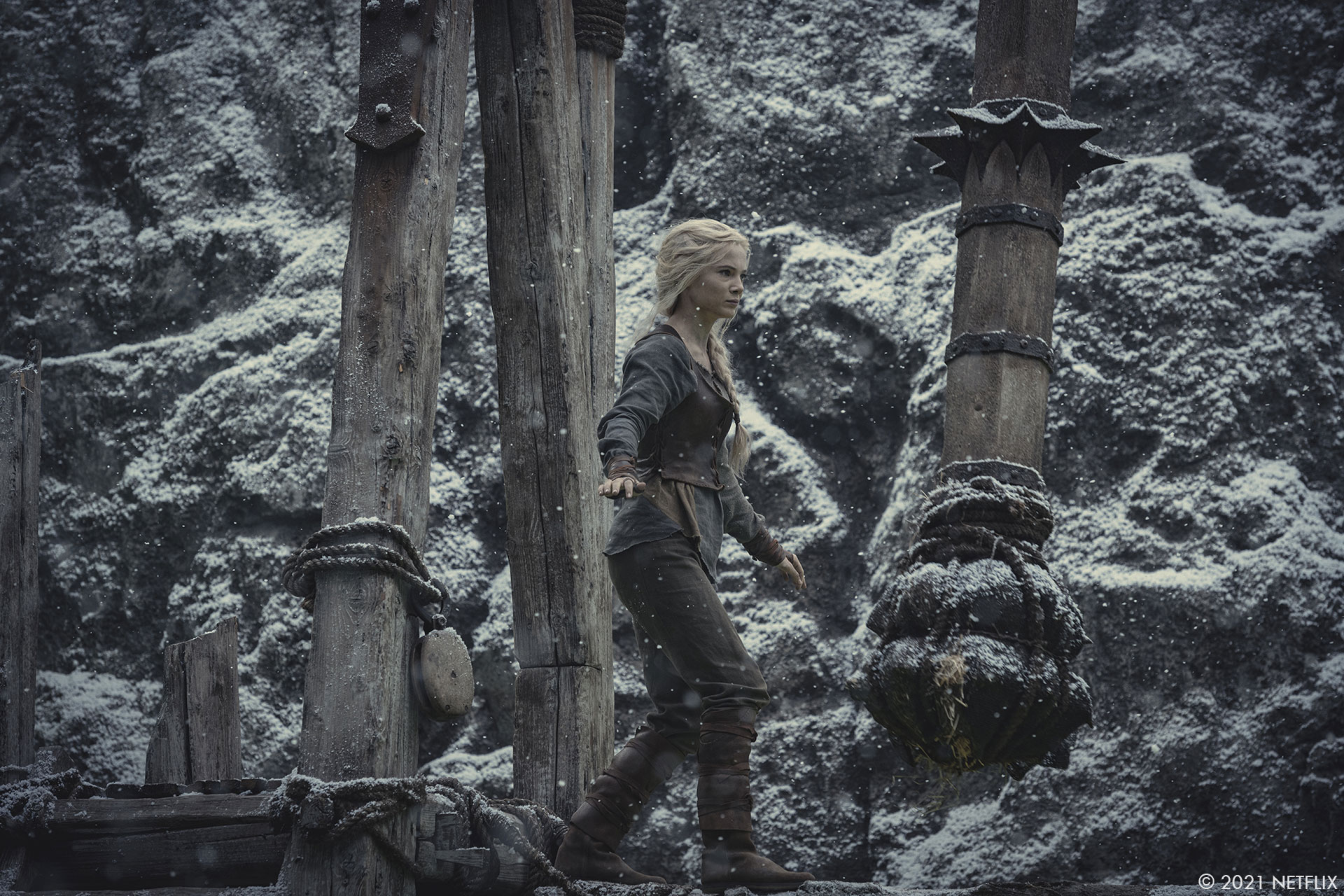
Which sequence or shot was the most challenging?
Dadi Einarsson // The opening scene in episode 1 when we fly over Sodden battlefield was challenging. We decided to pitch a “oner” where the camera flies over some charred trees, thousands of dead soldiers and then seamlessly into Tissaia extracting a memory from a dead Temerian soldier. We shot drone footage on the location which then needed to be stitched with a steadycam shot that lead us into the drama scene. All of the charred trees and most of the dead soldiers were CG and the stitch called for multiple CG projections and comp massaging to get it to work. Super tricky stuff but really rewarding to see an idea like that come together.
Similarly the final shot of episode 2 where Geralt starts to train Ciri. We again pitched a very complex shot and needed to convince the crew that it would work. They were really up for it and enjoyed the challenge of getting the right shot so that we could extend it. The result is a goosebumps shot of Ciri taking her first steps in Witcher training with Geralt as the camera pulls back on a crane, out of the Bailey and then carries on to reveal the whole of Kaer Morhen nested in its snowy mountain environment.
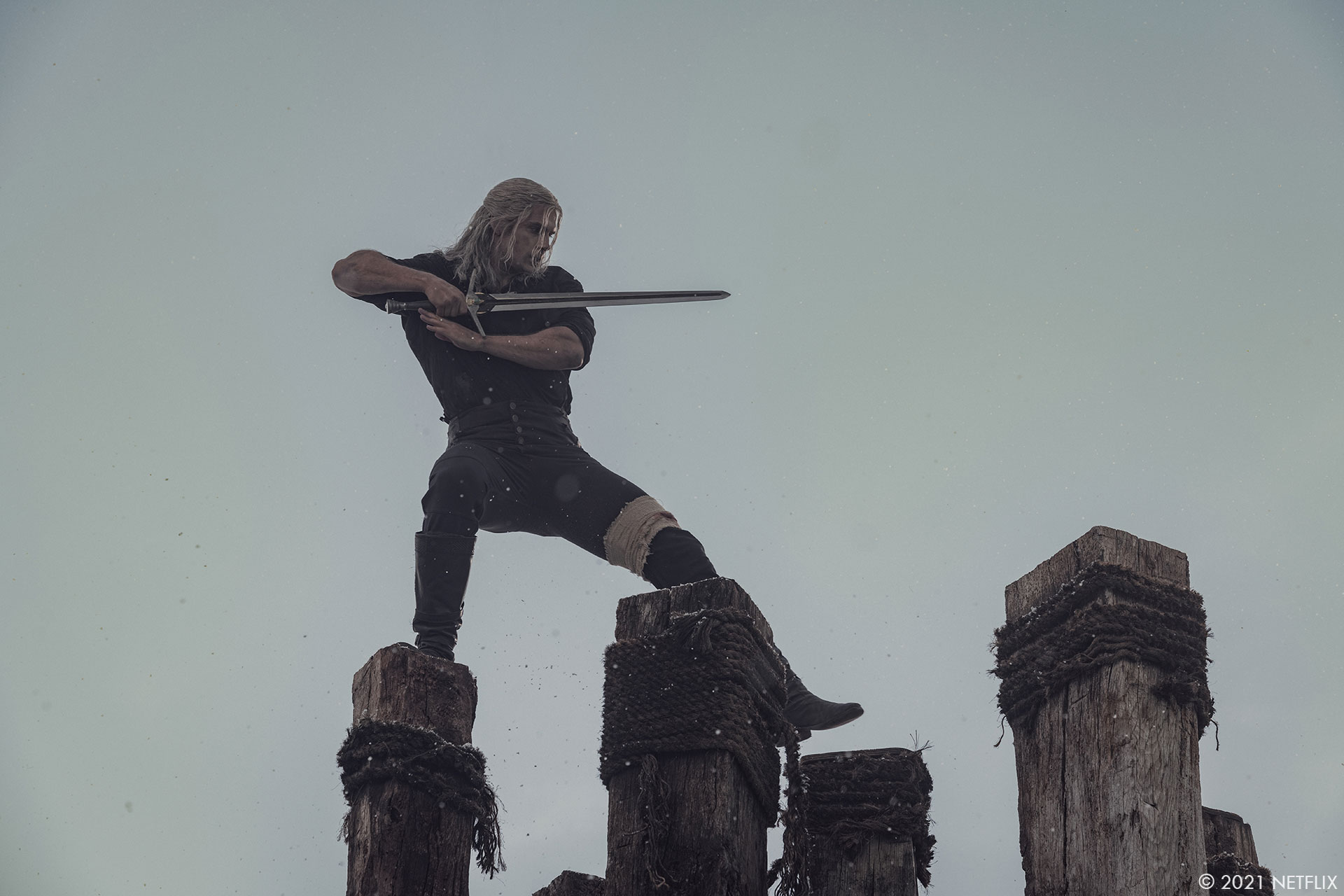
Is there something specific that gives you some really short nights?
Dadi Einarsson // Not anymore! I love doing what I do and the challenge is what drives me, gives me joy and makes me sleep well. We try to avoid crazy hours as it’s a long game and burning out is a real danger. It’s important to pace yourself and understand that whatever happens isn’t the end of the world.
What is your favorite shot or sequence?
Dadi Einarsson // I love some of the Nivellen and Geralt scenes where they just exist together as real characters. The approach to and first reveal of Kaer Morhen is great as well as the Ciri training pull out shot. The Basilisk fight at the end of the season is pretty epic. Hard to pick out favourites, I’m very fond of the work we did this season and the way we did it with the people that we did it with.
Gavin Round // I really proud of what we achieved with Nivellen. I think people are going love him. The Basilisks in ep 8 are awesome too.
What is your best memory on this show?
Dadi Einarsson // It’s a collection of great memories. We had an amazing crew of on set and post people. It’s the relationships you build, the people you meet, the coming together of enthusiastic, talented and crazy hard working people to make something for other people to enjoy. It’s really a very special journey. I feel so lucky to have been involved in it and to have all those memories.
Gavin Round // I have so many but I will say that working with such a collaborative and fun team and the memories of those relationships are very special.
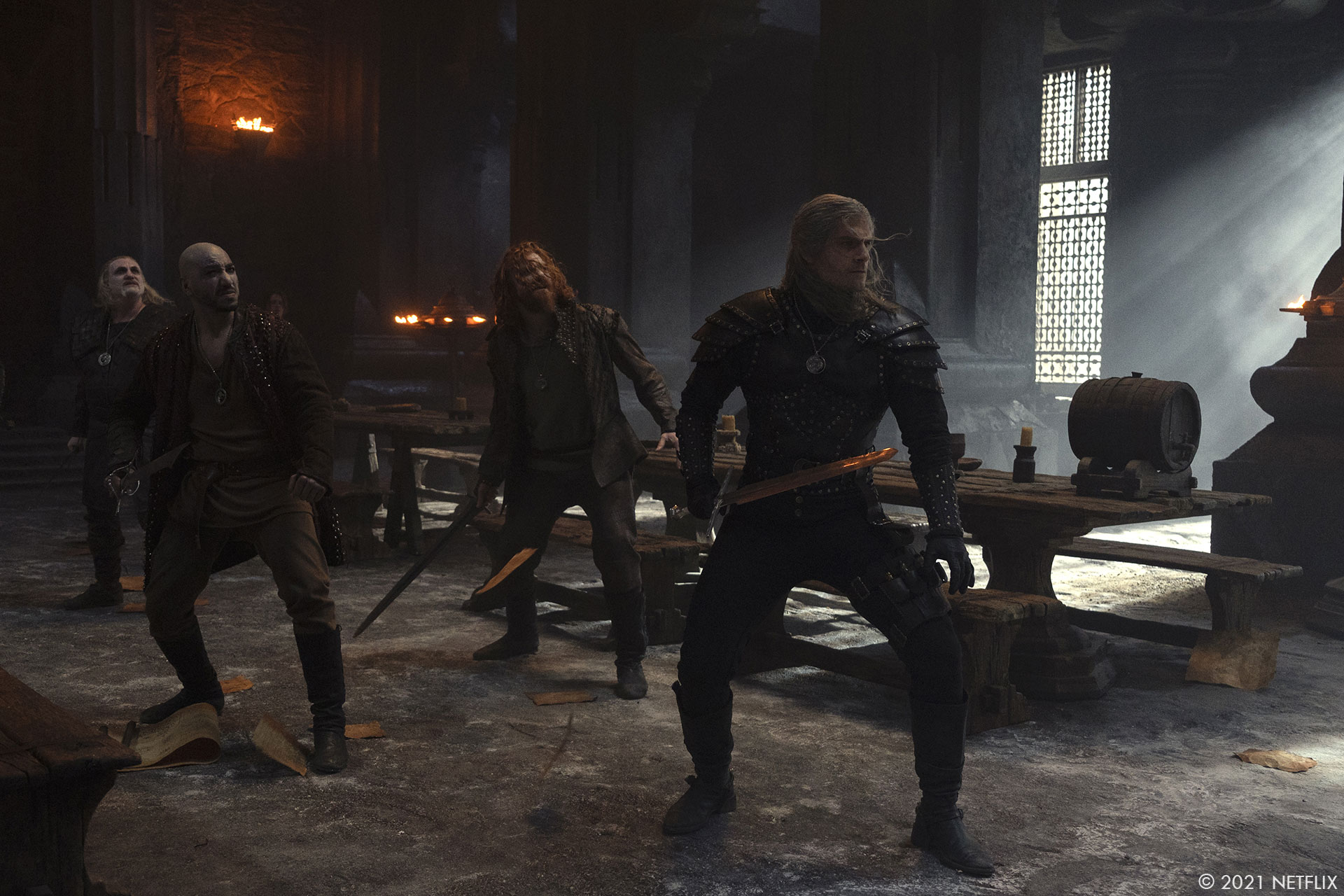
How long have you worked on this show?
Dadi Einarsson // Season 2 was almost exactly 2 years from start of prep to final shot delivered in post. There are very few people involved in shows like this who are on it as long as visual effects.
Gavin Round // I started working on season 2 as I was delivering season 1 back in Summer 2019 and then we had a bit of a hiatus due to the Covid pandemic so it’s been just over 2 years
What’s the VFX shots count?
Gavin Round // We delivered 2,400 final VFX shots across 8 episodes.
What is your next project?
Dadi Einarsson // I can’t say which project I’m on unfortunately, but I went straight into a show for Marvel.
Gavin Round // I’m currently working for Warner Bros on The Meg 2.
A big thanks for your time.
WANT TO KNOW MORE?
Netflix: You can now watch The Witcher on Netflix.
Platige Image: Dedicated page about The Witcher on Platige Image website.
Rodeo FX: Dedicated page about The Witcher on Rodeo FX website.
© Vincent Frei – The Art of VFX – 2021






